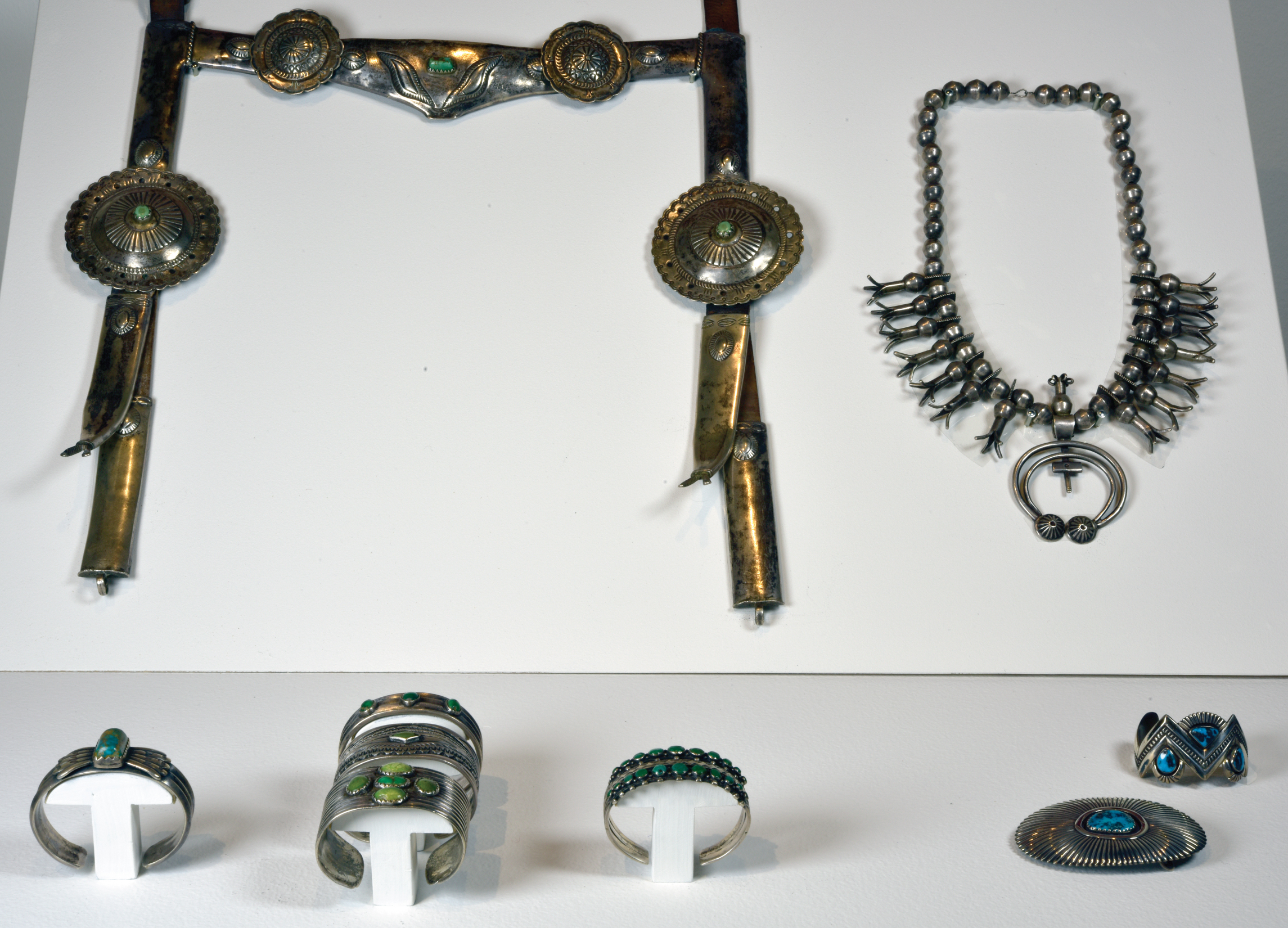Jewelry

Hózhó, or The Beauty Way, is a Navajo word that signifies living with beauty, balance, harmony, and well-being and is an important theme repeated throughout their cultural practices, including personal adornment such as jewelry and wearing-blankets.
Silversmithing, however, is a relatively new art form adopted by Pueblo and Navajo artisans around 1850. The Spanish and later the Mexicans introduced silversmithing and influenced some Native American designs. Silver ingots and Mexican and American silver coins (hence the term “coin silver”) were melted down and fashioned into items seen here, such as Squash Blossom Necklace, c. 1890, bracelets, and other personal adornments worn by men and women alike. Navajo items of adornment extended to their horses as in the Bridle (Headstall), 1890- 1900 and the colorful Wedge Weave Saddle Blanket, 1885-1895.
By the 1880s, Native American silver and turquoise jewelry was in high demand, prompting Juan Lorenzo Hubbell to hire Mexican silversmiths to teach the craft to more Navajos at his trading post in Ganado, Arizona. The demand for both traditional and innovative designs in Native American jewelry continues today as represented in the work of Kenneth Begay, considered by some as the father of modern Navajo jewelry design.
